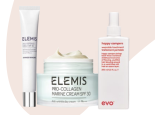Noise and hearing

Noise-induced hearing loss is caused by the prolonged exposure to excessive levels of noise – for example, noisy workplaces, loud machinery or just listening to loud music. It can also be caused by loud bursts of sound such as explosions or gunshots
The World Health Organisation (WHO) says that noise exposure is the biggest cause of permanent hearing damage around the world – more importantly it is avoidable. It is one of the commonest health problems and can be difficult to detect as the effects build up gradually over time and it may take a number of years to manifest itself. WHO says more than 1 billion teenagers and young adults risk losing their hearing by listening to loud music.
The UN agency urged young people to turn down the volume to prevent irreversible damage to their hearing. When this exposure is particularly loud, prolonged or habitual, the sensory cells within the inner ear are damaged permanently, leading to irreversible hearing loss. The volume or intensity of sound is measured using the decibel (dB) scale, where 0dB represents the quietest sound that a healthy human ear can hear. This is a logarithmic scale so every increase of 3dB means that the sound intensity is doubled. So, a sound of 83dB is twice as intense as a sound of 80dB, although it won’t sound twice as loud. Sound levels under 85dB are generally safe to listen to, but if you work in a noisy environment where the sound levels exceed 80dB, an employer should assess the risk to your hearing and offer appropriate advice and action. Long exposure to sounds over 85dB can cause permanent hearing loss, tinnitus or both, so appropriate action and protection should be taken.
Your risk of hearing damage from loud noise is dependent upon two things – how loud the sound is and how long you are exposed to it. The safe exposure time for sound levels at 85dB is eight hours. As the sound intensity doubles with every increase of 3dB, the safe exposure time halves. So, for example, the safe exposure time for 88dB is four hours, 91dB is 2 hours and for 100dB it is only 15 minutes. Studies in middle- and high-income countries show nearly 50% of teenagers and young adults aged 12 to 35 years are exposed to unsafe levels of sound from personal audio devices, and around 40% are exposed to potentially damaging levels of sound at concerts, nightclubs etc. Young people who wear earplugs during concerts can feel as much of a rush from the music at 90 decibels as they can at 110 decibels. The fact that earplugs may look uncool may be true today, but if there is a change in behavior that may not necessarily be true in the future and wearing earplugs may actually be cool rather than not, The World Health Organization advises young people to keep the volume down on personal audio devices and limiting use to less than one hour a day. The important message is to look after your ears before it becomes too late – prevention is better than the cure
For further information or to book a FREE hearing assessment then contact: Sound Advice Hearing 1 Cross Street Peterborough PE1 1XA Tel: 01733 343888 Email: or visit our website www.soundadvicehearing.co.uk















